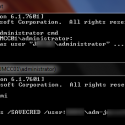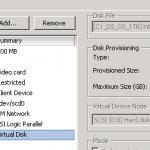yum install packagename
To search for available packages
yum list php*
For more info
man yum
Don’t forget you can install the yum-priorities package, then add priority=1 or priority=5 – any number to set a priority for the particluar repo. I usually set the centos ones to 1, rpmforge to 5 and the others to about 10.
CentOS
The main yum repositories are installed by default and you will find them at: /etc/yum.repos.d
They will be named CentOS-Base.repo and CentOS-Media.repo
Enable the sections you want in these files and set priority=1 as we prefer the well tested versions of software.
RPMForge
RPMforge has a wider range of packages available than the standard Red Hat/CentOS repositories including: clam, phpmyadmin
Installation instructions are at: http://www.rpmrepo.org/RPMforge/Using
Following these instructions for CentOS 5 64-bit we would install with:
su -c ‘rpm -Uvh http://packages.sw.be/rpmforge-release/rpmforge-release-0.5.1-1.el5.rf.x86_64.rpm’
Check the rpmforge.repo file is now in /etc/yum.repos.d and add a priority=5 line if you want.
IUS
The IUS Community provides more up-to-date versions of PHP, MySQL and Python with version names that do not conflict with the base repositories e.g. yum install php53
rpm -ivh http://dl.iuscommunity.org/pub/ius/stable/Redhat/5/x86_64/
EPEL
I used the EPEL repository at one point to get a specific PHP version which had not been released (and tested) on the other repositories and also a fairly specific scientific program. Installation instructions are at: http://fedoraproject.org/wiki/EPEL/FAQ#howtouse
For example for CentOS x86:
su -c ‘rpm -Uvh http://download.fedora.redhat.com/pub/epel/5/i386/epel-release-5-4.noarch.rpm’
REMI
I used the REMI repository at one point to get a specific
PHP version which had not been released (and tested) on the other
repositories . Installation
instructions are at: http://dev.antoinesolutions.com/remi-repository
For example for CentOS x86:
su -c ‘rpm -Uvh http://rpms.famillecollet.com/el5.i386/remi-release-5-6.el5.remi.noarch.rpm‘
Atomic ART
The Atomic repository has some extra packages mainly focused at servers running Plesk but I found the packages for OpenVAS on there that were not available on other repositories.
Download the following shell script:
wget http://atomicorp.com/installers/atomic
Make it executable and then run it.
chmod +x atomic && ./atomic
Answer the questions and you will have the atomic.repo file in /etc/yum.repos.d
Summary
For all these repositories it is worth checking the /etc/yum.repos.d/*.repo files for the following options:
- Enable the RepositoryChange enabled=0 to enabled=1
- Set priority for the RepositoryAdd priority=3 to the end of the section
Using extra package repositories makes life easier for being notified of updates and installing new packages/updates, however if a package is not available or you need extra configuration you can always compile the traditional way ./configure make make install

